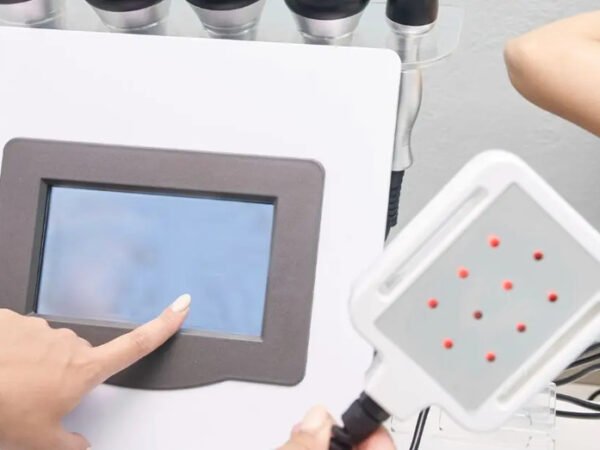Introduction
Understanding how to convert Celsius to Fahrenheit is essential, particularly in health monitoring. Accurate temperature readings are crucial for diagnosing and managing illnesses effectively. This article explores the significance of converting 36.8°C, a standard measure of average body temperature, to Fahrenheit and how this knowledge contributes to health accuracy.
Understanding Temperature Scales
Temperature is a fundamental aspect of health assessment. It indicates our body’s internal state and deviations from the norm can signal underlying health issues. Different regions use different temperature scales, making it vital for healthcare professionals to accurately understand and convert between Celsius and Fahrenheit. For instance, in many parts of the world, Celsius is the preferred scale, whereas the United States primarily uses Fahrenheit.
Conversion Formula and Calculation
The formula (C × 9/5) + 32 is used to convert Celsius to Fahrenheit. This simple mathematical conversion is necessary for maintaining consistency and accuracy in temperature readings, especially in international healthcare settings. When converting 36.8°C to Fahrenheit, we apply the formula: (36.8 × 9/5) + 32, resulting in 98.24°F. This conversion is not merely an academic exercise but a practical skill that ensures healthcare providers can communicate effectively across different systems and regions.
Practical Applications in Healthcare
Accurate temperature readings are critical in healthcare. They help in the early detection of illnesses, allowing for timely medical intervention. For instance, fever is a common symptom that can indicate various conditions, from infections to more severe diseases. Knowing the exact temperature helps in assessing the severity of the condition. A reading of 36.8°C is considered normal, but what does this mean in Fahrenheit? Converting this to 98.24°F ensures that medical professionals using the Fahrenheit scale can accurately interpret the patient’s temperature, avoiding potential confusion.
Choosing the Right Thermometer
The choice of thermometer also plays a significant role in obtaining accurate readings. There are various types of thermometers available, including digital and mercury thermometers. Digital thermometers are widely favored due to their ease of use, quick results, and safety features, as they do not contain mercury, which is hazardous. On the other hand, mercury thermometers, while highly accurate, require careful handling due to the risk of mercury exposure if the thermometer breaks. Healthcare providers must choose the right type of thermometer to ensure the safety and accuracy of temperature readings.
Factors Affecting Temperature Readings
Several factors can influence temperature readings, making it essential to consider variables such as room temperature, physical activity, and recent food or drink intake. For instance, measuring body temperature after exercising can increase readings due to increased body heat. Similarly, consuming hot or cold beverages can temporarily alter oral temperature readings. It is recommended to wait at least 15 to 30 minutes after eating or drinking before measuring temperature. The environment in which the reading is taken should also be stable, as extreme ambient temperatures can affect the accuracy of the measurement.
Recognizing and Responding to Symptoms
Another crucial aspect of health monitoring is recognizing and understanding the symptoms associated with fever. An average body temperature ranges around 36.8°C (98.24°F), but variations can occur due to individual differences and external factors. Symptoms such as unusually hot or cold, shivering, sweating, and experiencing body aches can indicate a fever. Early detection and monitoring of these symptoms can prompt timely medical intervention, potentially preventing the progression of illnesses. Regular temperature checks, especially when unwell, can provide valuable insights into one’s health status.
Public Awareness and Technological Advancements
Public awareness and education play a significant role in promoting health and wellness. Understanding how to measure and interpret body temperature correctly is essential for individuals to take proactive steps in managing their health. Public health campaigns and educational initiatives can disseminate this knowledge, emphasizing the importance of regular temperature monitoring. With technological advancements, modern tools such as intelligent thermometers have made it easier to track and record temperature readings accurately. These devices often come with applications that help monitor trends over time, providing a comprehensive overview of one’s health.
The conversion of 36.8°C to Fahrenheit is not just a numerical exercise but a critical health assessment component. In healthcare, precise communication and accurate measurements are paramount. For healthcare professionals working in a global context, the ability to convert temperatures accurately ensures that they can provide consistent and reliable patient care, regardless of the temperature scale used. This skill is essential in scenarios where medical data is shared across different regions or countries, ensuring that all healthcare providers are on the same page regarding a patient’s health status.
Accurate temperature measurement and conversion contribute to effective healthcare delivery. They aid in diagnosing, monitoring, and treating various health conditions. Understanding the conversion between Celsius and Fahrenheit allows for precise temperature interpretation, vital in making informed medical decisions. As healthcare continues to evolve with globalization and technological advancements, accurately converting and understanding temperature readings remains a fundamental skill for healthcare professionals.
Conclusion
In conclusion, temperature is a crucial metric in health monitoring, and understanding how to convert between Celsius and Fahrenheit is essential for accuracy. The conversion of 36.8°C to Fahrenheit, resulting in 98.24°F, ensures consistent and precise communication in healthcare settings. Choosing the suitable thermometer, considering factors that affect temperature readings, recognizing symptoms, and leveraging modern technologies all contribute to effective health management. Public awareness and education further enhance our ability to monitor and maintain good health. Accurate temperature measurement is a fundamental aspect of healthcare that supports early detection, timely intervention, and overall health accuracy.
Do Read: 5 Ways to Promote a Healthier and Happier Workplace













